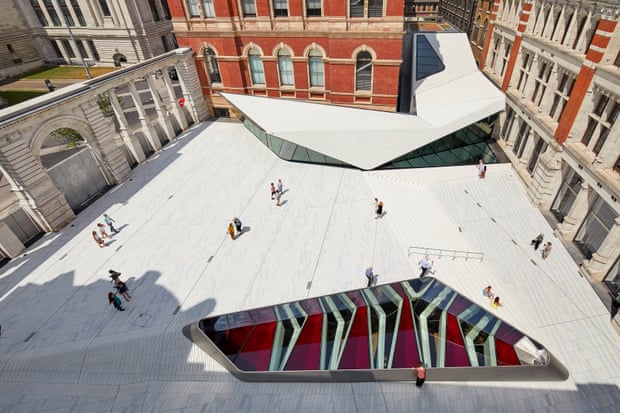There’s a battle going on behind the scenes of museums and
its taking place in project meetings across the world. Collections staff are
having to harness their collection management toolkits, arm themselves with
knowledge of off-gassing, lux levels and accurate RH and temperature readings. All
in the good name of best practice in collections management.
The Times recently published ‘Amanda Levete begs V&A’s
curators to see the light and feel the drama’ and it documents an all too
familiar battle that collections management face with architects, designers and
any creative minds who do not appreciate the duty of care museums need to take
to preserve collections for future generations.
The Times article outlines the development of the
‘occulus’ in the redeveloped courtyard of the V&A – a skylight that
would ‘bring light to the historic collections’ (nah mate) and allow the public to view into the
galleries below - if curators weren’t such cowards apparently. For any
collections staff it’s an infuriating read that of course sympathises with Levette.
The article goes on
to claim that curators are conventional and terrified of daylight and thus have
used black out blinds to block out the scary sunlight since opening. Levette’s team had calculated that the light
would fall down eighteen every hour of every day in every year’
. Yep - you heard right. Every. Single. Minute of every single day light would be falling onto
the collections. And naturally the article takes no counter argument or
consideration to collections care into account, - there wouldn’t be an issue
with daylight falling onto the collections for 18 hours a day – nothing would
happen right?
The curators are far from
cowards and should be highly commended for sticking to their point and pull
down the blinds on such risks to their collections. Indeed, I'd say its a win for collections management everywhere to see a curator who is so clearly on-side with the conservation staff.
But this battle is not one that the V&A face alone, having
spent much time working on exhibitions I’ve heard all of the ‘innovative’ and
‘striking’ ways we should put our collections at risk for the sake of a
creative display. It doesn’t matter how many times you pass on collections display
guidelines, barrier lengths and glass thickness details designers and
architects will still come back with some crazy way of putting their concept
first and the museum collection last – in my time I’ve heard of smoke machines
in galleries (nope) the all too common staking objects on top of one another
(definitely not) and the enraging ‘does it really need a barrier?’
How do we overcome it and continue to ensure collections are put first?
How do we overcome it and continue to ensure collections are put first?
Voice your concern – if something doesn’t make sense on a
drawing or a design briefing, ask about it! Often designers will have examples
of similar displays, ways of mitigate risk or quite simply some ingenious and
sneaky way of displaying objects safely and securely.
Assess the risk – if you really think that the collection is
at risk and the designers aren’t budging then do a collections risk assessment,
outline the eventualities and how the collection can be affected – this can
serve as a good midway point to the argument. If there’s too much of a risk can
a facsimile be made?
Stick to your guns – Hold your own and don’t be bullied into
stepping down, there is a certain amount of creative thinking that can be
discussed in early design plans but if ultimately the object is at risk and
documented then don’t let it happen. Speak to colleagues in other museums and
see how similar projects but remember as collections carers the objects come
first.
Put the challenge over to them - Designers are brought on to projects to bring their experience, expertise and problem solving skills. They also work for the museum, who is the client. Challenge them to come up with innovative solutions that work within the environmental conditions you require. The design process should always be a conversation!
Put the challenge over to them - Designers are brought on to projects to bring their experience, expertise and problem solving skills. They also work for the museum, who is the client. Challenge them to come up with innovative solutions that work within the environmental conditions you require. The design process should always be a conversation!
And finally!
Remember the goal - All parties are working towards the same aim a great display and an increase in access to our wonderful collections!



No comments:
Post a Comment